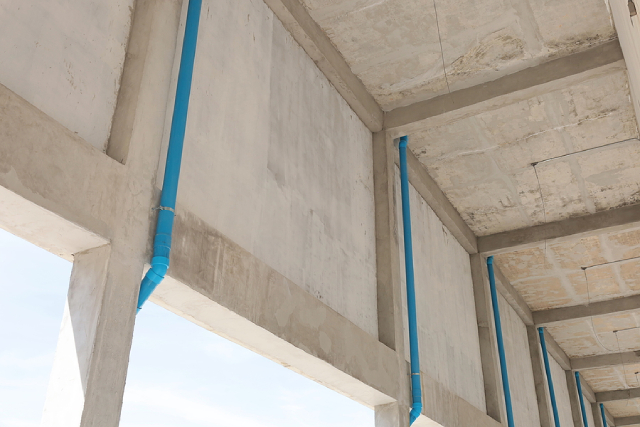
23 Feb Rainwater Downpipes: A Quick Overview of Its Uses and Parts
A rainwater downpipe system is an indispensable part of any structure as it facilitates drainage of rainfall away from the property, enabling it to withstand even the heaviest weather conditions and difficult climates.
These downpipes direct rainwater from a building’s roof via the gutters to a drainage system. A faulty downpipe or, worse, a lack of it can lead to all sorts of issues, including blocked drainage, leaking roofs, damp walls, and standing water that could attract mosquitoes and cause all sorts of health problems. As such, it is vital to be familiar with this small yet significant part of a healthy drainage system. Read on to learn more about its uses and parts.
An Overview of Rainwater Downpipes
As its name implies, rainwater downpipes go on the bottom of a drain to carry out their sole function of directing rainwater away from a home or building. This part of the drainage channel is generally situated close to the drainage system as they work to efficiently remove water down from the roof gutters and out to the nearest drain.
Virtually all building regulations require the adequate provision of the proper flow and removal of rainfall from the roof of buildings, and this can be achieved in one of two ways:
1. Using a sloped roof that leads to a surface water collector
2. Installing roof gutters where water can flow down to a vertical downpipe
Downpipes are typically located at the corners of homes and buildings and often stretch from the roof to ground level. Rainwater that flows through these drainage channels is discharged towards either a soakaway, a combined sewer, or a surface water sewer.
Regardless of the drainage system available, rainwater downpipes are essential to ensure the abovementioned issues do not occur.
Components of a Rainwater Downpipe System
Knowledge of the various parts of a rainwater downpipe system—from gutter outlets to uPVC downpipes—allows for the proper replacements and repairs should they be necessary, given that the materials of these components are still vulnerable to deterioration and damage despite having rainwater resistance.
1. Guttering
The guttering or roof gutters is the part affixed around a building’s roof to catch rainfall and remove it from the party. They come in many volume options to accommodate varying levels of rainfall experienced by differing regions.
Roof gutters are generally 100mm wide and are suitable for heavy downpours. For structures situated in areas that regularly experience great rainfall, a bigger gutter may be necessary to withstand greater volumes of rainwater.
2. Gutter outlet
The gutter outlet helps to drain rainwater from the guttering to the plastic downpipe. This component usually has a straight shape, or a double bend known as a swan neck, ideal for buildings with overhanging roof eaves.
3. Plastic downpipes
Roof gutters channel water to the plastic downpipes, which go down the side of the building and move the rainwater from the roof into the gullies at the ground level. These pipes are available in a range of sizes and materials like traditional cast iron.
However, uPVC pipes are the leading choice for most applications nowadays. This is due to their lower price point, easier installation procedure, high environmental resistances, and low maintenance requirements, all while being just as strong and durable. For 100mm width roof gutters, a 75mm width plastic downpipe is typically the go-to choice to pair them with.
4. Gully
Rainwater travelling down the downpipe is drained into the gully, the ground-level part of the rainwater system that transports the water to the underground drainage system and effectively removes rainfall from the property.
Conclusion
Rainwater downpipe systems are indispensable to any structure as they keep water damage and many other issues from occurring within a property. Given the various levels of precipitation experienced across regions, it is important to install the right configuration to withstand the expected rainfall volume year-round.
For the best and most reliable uPVC rainwater components you can trust, look no further than Vicplas. As the leading manufacturer of uPVC pipes and fittings for various applications, including underground drainage, electricity, cable piping, and hydroponic systems in Singapore, our high-calibre solutions of up to more than 400 styles of drain pipes and fittings are the go-to choice for many industrial and commercial projects in the country. Don’t hesitate to get in touch with us today and learn more about our green and ISO-certified products, such as our SS141 uPVC pipes!
